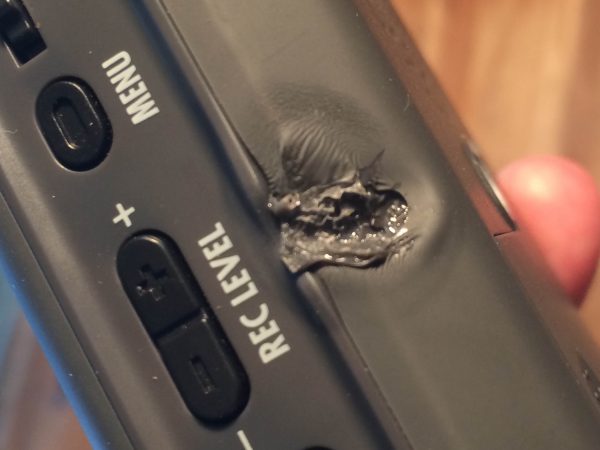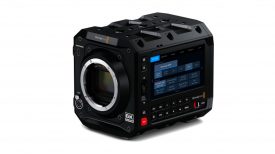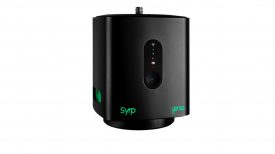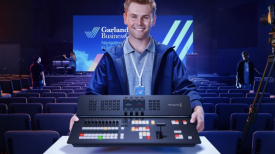By technical editor Matt Allard:
MAESTRO WU from Matthew Allard ACS on Vimeo.
As the world continues to shrink and technology allows our work to be seen by far more people there can still be one barrier: language. Anything involving the spoken word that isn’t in your native language is usually accompanied by subtitles or a voiceover. The mix of two different voices at once or distracting words on the screen can often take the viewer away from the story. Imagine for a second that you were deaf. If you turned off the sound, would you still be able to follow what was going on? Just try it for a minute and see. This is an extreme example, as I think a good piece should be accompanied by sound, but not always words or dialogue. It should be able to tell you the story without you hearing a single word.
Think about how you would shoot a story if it was not going to be accompanied by any words or dialogue. This will force you into thinking about how visuals alone can tell a story – and at the end of the day, that is our job as visual story tellers. If you look at the film All Is Lost with Robert Redford, it is the perfect example of how visuals, music and natural sound tell a story without dialogue. There are only a couple of words spoken in the entire movie, Robert Redford is the only character and the story takes place on a small yacht. To keep an audience’s attention for more than 1.5hrs is very difficult.
When shooting Maestro Wu, I wanted to show his concentration and craft without words getting in the way. The Taiwanese craftsman has been designing and making knives for over 60 years on Kinmen Island. In World War II, the serious lack of materials – especially steel – prompted him to collect the artillery shells dropped by Allied troops and use the metal in those. Later, artillery bombardment from the mainland left hundreds of thousands more shells. The Kinmen Steel Knife now enjoys an international reputation.
I wanted the viewer to be immersed by what was going on and to be focused on the attention to detail and the beauty of what he was doing. For something like this to work you have to think about the style in which you want to shoot and also the best way to convey what you want the audience to see. I utilized almost entirely high speed frame rates for this piece. I didn’t do this just because I thought it would be cool to shoot high speed, but to help tell the story.
A lot of skill and precision goes into making the knives, but it it is really hard to see unless you see it up close. By shooting a lot of tight shots and at high speed I could take the viewer into the world of Maestro Wu. When you’re shooting, every shot should tell its own story. They should be unique and well thought out. A great piece can be ruined by one or two poor shots.
This one was shot in just a few hours and I had no real plan when I started to shoot it. I asked Maestro Wu after he finished making the knife whether he has an idea in his head before he starts and he told me that it usually just comes to him while he’s doing it. I thought about this for a while and realised that in a lot of instances that is how I shoot. For me, the story or the ideas evolve during the shoot. I find in news and documentary shooting that trying to do too much planning in advance often does not produce a good result. Actors are good at being able to do something exactly as you want it done; that is why they are actors. Everyday people are not. They always seem awkward or the situation seems forced. I prefer to let things happen in front of me with as little intervention as possible. In saying this, of course I have a plan of how I want to shoot or the style I want to shoot it in, but the specifics always change and evolve as I go.
As far as the technical and equipment side of things go it was shot mostly on a Sony FS700 and a little bit was done with the Sony F3. The FS700 material was all shot at 200fps and all captured internally to AVCHD. The F3 was recorded internally to SxS cards at 35Mb/s. There are a few F3 shots that were done at 50p at 720p. I only used one light – a Nila Varsa. This was mainly used as a strong backlight when shooting the high speed frame rates on the FS700. I have found that from previous experience that a strong backlight works really well when shooting fine details in high speed. It meant all the little bits of metal and dust that were coming up got illuminated instead of being masked by a strong key source. Using just the one light also gave me a dark background to highlight what he was doing. When he is hammering the steel, all I want the viewer to focus on is that. If the background was illuminated then it would have been distracting.
There were no log profiles used on any of this shoot. The look was created in camera. I edited it in FCPX and did only a few small colour tweaks inside the same NLE. Zeiss ZF2 lenses were used.
While I have focused on the importance of visuals, there was one other big component to making this whole shoot work: SOUND. Without the sound it’s still interesting, but it is the sound that takes you into Maestro Wu’s workshop. A lot of people make the mistake of just shooting some pretty pictures and adding some music. While there is nothing wrong with this in some cases, it leaves the viewers in their lounges and doesn’t take them to the place of the story. I used music to give it a mood and feel, but I used natural sound to make viewers feel they were standing in that workshop. When shooting high speed, you have to be very aware that there is no sound being recorded. You need to record your sound externally, pay attention to it and not just get caught up with visuals. I used the Zoom H4N to record all my audio. It really is important to capture sound as close to the source as possible; a microphone placed 20ft away from your subject isn’t going to sound as good as one 2ft away. That said, I did at one stage put the H4N too close to the heat and ended up melting some of the plastic casing.

I’ve also placed two other projects below. I did them many years ago and they were shot in the same style, using no dialogue to tell the story.
The Sword Maker & The Swordsman from Matthew Allard ACS on Vimeo.
The Geisha from Matthew Allard ACS on Vimeo.
Just remember that your working in a visual medium. It’s the visuals that carry a story and not necessarily the dialogue. There are of course exceptions to every rule and cases where the visuals can’t tell the story by themselves. Next time you shoot just try thinking about how you would tell the story If no words were used. Even if there is ultimately going to be dialogue or subtitles in the piece it will help you as a cameraman tell the story if you think on a purely visual level.





